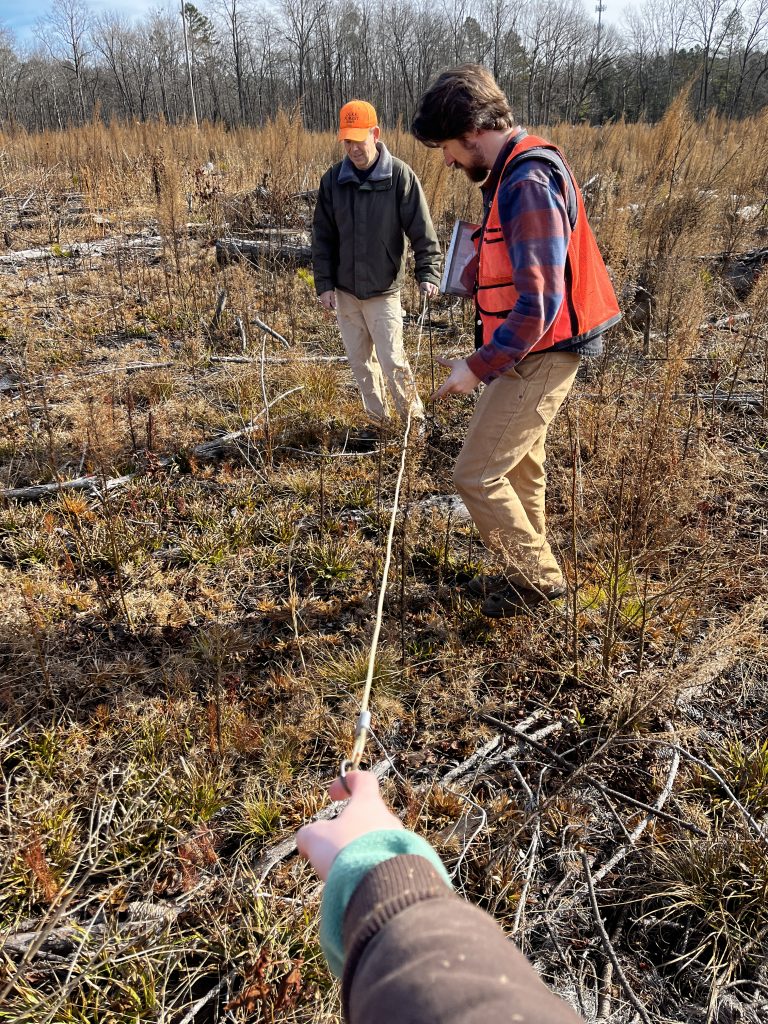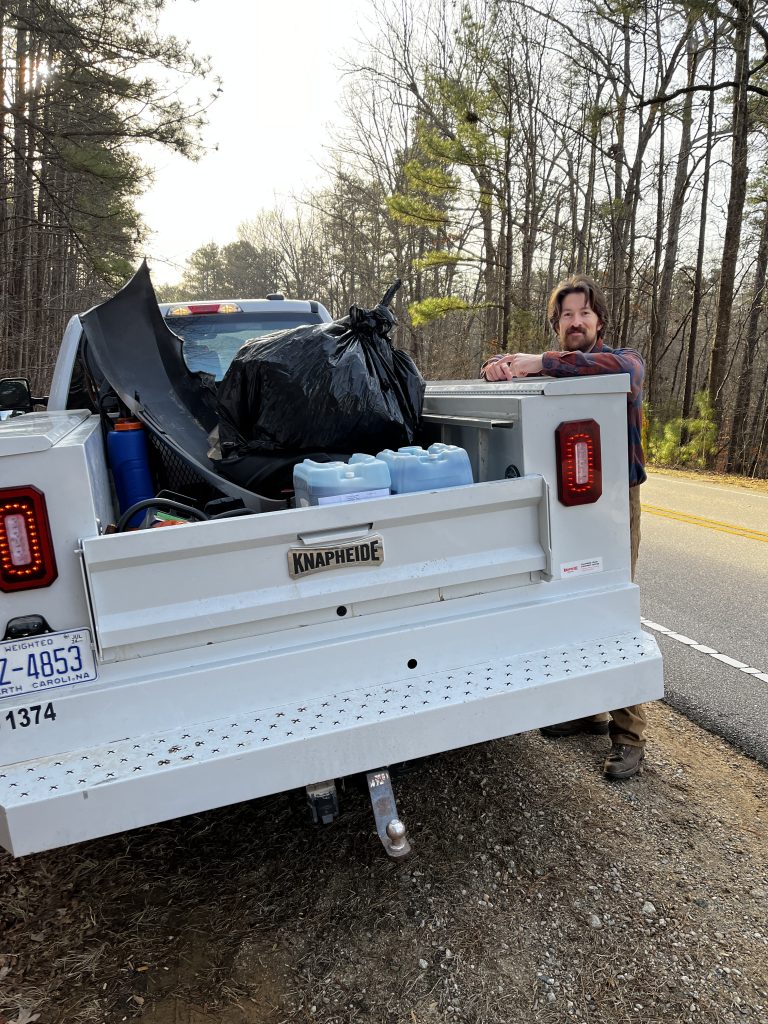Senior Program Coordinator Maggie Heraty spent a day with Forest Supervisor Tom Craven and Forest Technician Zach Carnegie and gained a new appreciation for how much they accomplish in a typical day. She shared her reflections with our team, and we’re sharing them here as an homage to our Field Team’s hard work.
by Maggie Heraty, Senior Program Coordinator
I just want to share a description of a random Monday morning in which I happened to be helping out Tom and Zach. It’s truly amazing how much our field staff do on a daily basis in the Duke Forest.
(By the way, Craig was up to something else entirely this morning, so even more was happening in the Forest than I could capture here!)
Already by 9 am, we had done so much (most of which was spur of the moment):
- At the Maintenance Shop, Tom checked and sent some emails and printed out the tree survival count datasheets. Meanwhile, Zach (with me shadowing closely behind) grabbed herbicide materials that Tom and Zach will be using this afternoon to treat some invasives in the Blackwood Division (I believe they’re doing this at the big wisteria infestation).
- An email had come in about a large downed tree across Gate 3 to 7 Road. We quickly grabbed chainsaws and PPE [Personal Protective Equipment], and drove out to Gate 7. Tom sawed the tree, while Zach and I “swamped” behind him—pulling all branches off the road, helping Tom roll away the big cut logs. We briefly greeted multiple rec visitors (hikers and runners) who passed by while we were clearing the tree. Many of thanked us for our work.



- On our way back to the Maintenance Shop, we stopped at Gate C to clean up a bunch of vehicle debris (likely where someone had crashed their car along Hwy 751, broken off bumper and other parts were strewn about). A previous Duke Forest staff member had notified Tom previously about this debris, and since we were passing by, we took the time to clean it up. That’s often how some things get done — when we have the time, the tools, the truck, and the personnel. We also filled a garbage bag with litter that was along the roadside.

After that, we started the ”real” work (what Tom had actually planned for us for the morning):
- We headed out to the Blackwood Division to recent timber management areas. Our goal for the morning was to perform a survival count survey: estimating how well the planted Loblolly pine trees are doing. This was my first time participating in a survival count, so I learned a lot about what it is and how it’s done:
- We performed 1/100-acre plot surveys. In the photos below, you can see me and Tom holding onto a chain/leash, which we use to measure out the circular 1/100-acre plot, and Zach is recording on the datasheet. In each plot, we determined:
- 1. the number of planted pine trees and their average height
- 2. the number of pines naturally regenerating
- 3. the number of hardwoods growing (mostly stump re-sprouts) and their average height, estimating the potential competition for the pines.
- We also tracked other notable things in each plot, like if invasive stiltgrass/Microstegium vimineum (MIVI) was growing heavily in an area (see 3rd picture).
- We performed 1/100-acre plot surveys. In the photos below, you can see me and Tom holding onto a chain/leash, which we use to measure out the circular 1/100-acre plot, and Zach is recording on the datasheet. In each plot, we determined:
- From here, the Field Team can estimate the number of trees per acre (TPA) and get a sense of whether or not the pine planting was successful. They can make a management plan for if they need to do anything to further promote the pines, reduce hardwood competition, etc.
- Additionally, Tom and Dr. Sari Palmroth will be teaching Nicholas School of the Environment students in Sari’s Silviculture course how to do these 1/100-acre plot survival counts and how to analyze the results.



To close out the eventful morning, we managed to gather some fallen cedar to give to the Sarah P. Duke Gardens for an installation they are planning. We made it back to the Maintenance Shop for a few minutes of catching up on emails, which seemed a world away from the measuring chains, the pine saplings, the roadside litter, and the humming chainsaws.
I’m always so impressed with the work of our field team (Tom, Craig, and Zach) and gain a new appreciation for the many different things they do every time I am out with them.







